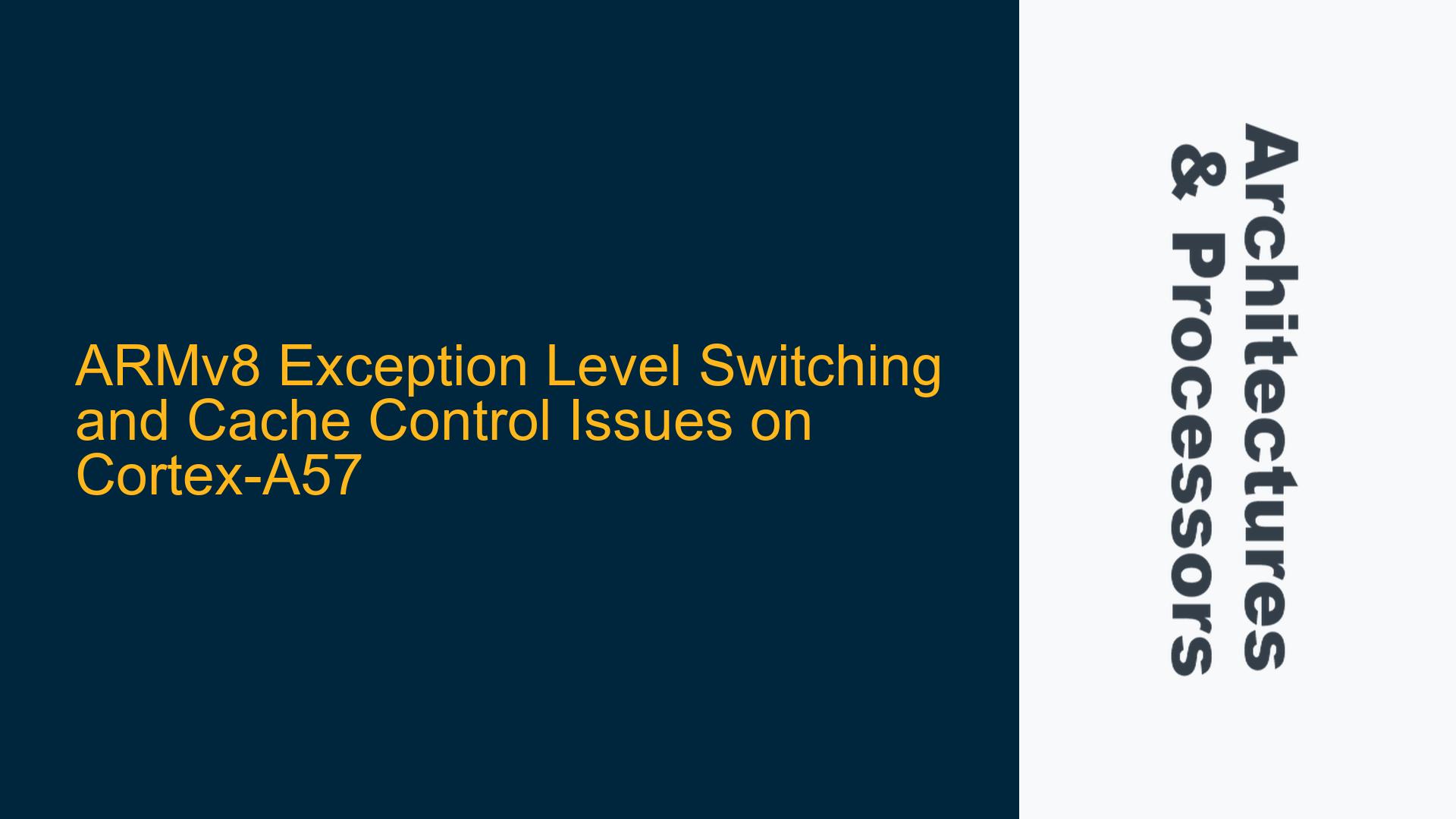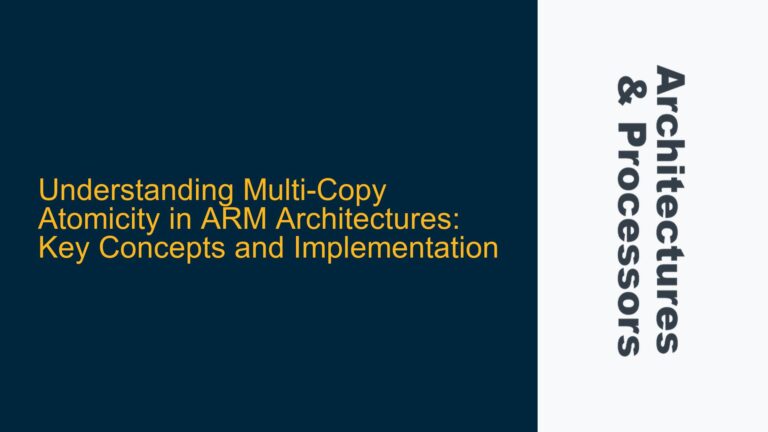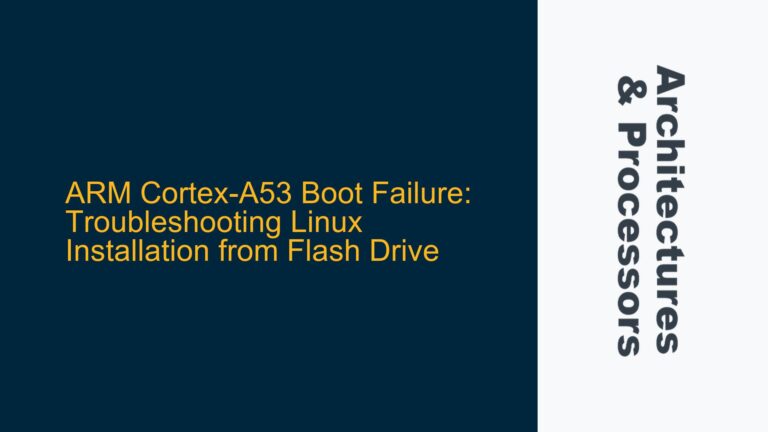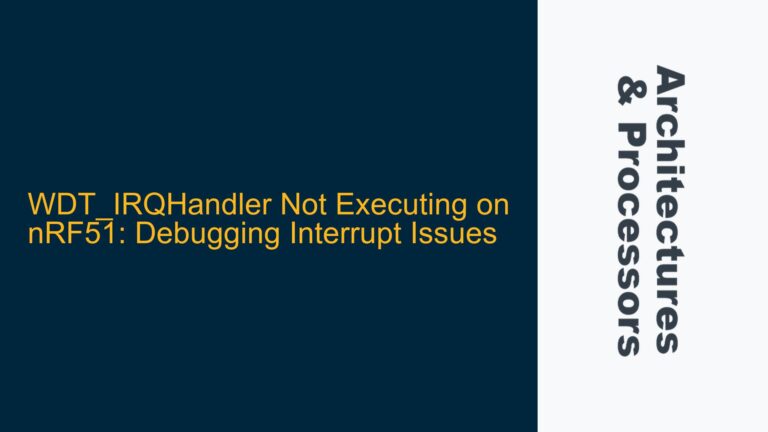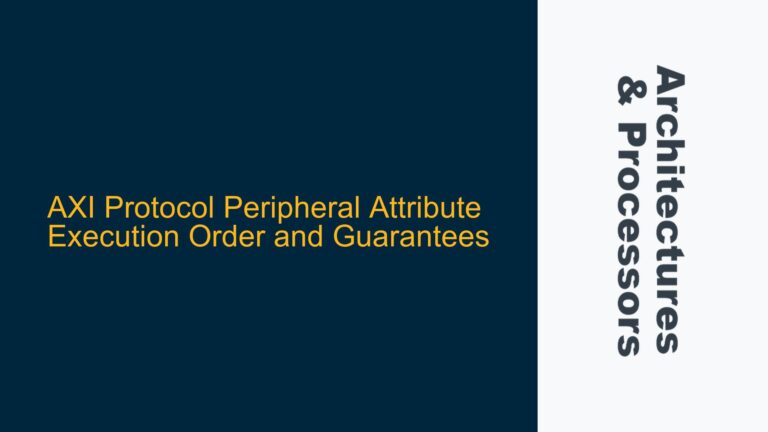ARMv8 Cortex-A57 Cache Mechanism Disabling Requires EL1 Access
In ARMv8 architectures, particularly on the Cortex-A57 processor, certain system-level operations such as disabling the cache mechanism require execution at higher Exception Levels (ELs) like EL1 or above. The Cortex-A57, being a high-performance processor designed for applications requiring significant computational power, implements a sophisticated memory hierarchy that includes caches to optimize data access speeds. However, there are scenarios where disabling the cache mechanism becomes necessary, such as during low-level debugging, performance analysis, or when implementing custom memory management strategies.
The ARMv8 architecture defines four Exception Levels (EL0 to EL3), each with varying degrees of privilege and access to system resources. EL0 is the least privileged level, typically used for user applications, while EL1 is used for the operating system kernel. EL2 and EL3 are reserved for hypervisor and secure monitor operations, respectively. Access to certain system registers, including those controlling the cache mechanism, is restricted to higher Exception Levels. This restriction ensures that critical system configurations are not inadvertently modified by less privileged software.
In the context of the Cortex-A57, the cache control registers, such as the System Control Register (SCTLR), are only accessible at EL1 or higher. Attempting to modify these registers from EL0 will result in an exception, as EL0 lacks the necessary privileges. This design is intentional, as it prevents user-level applications from making potentially destabilizing changes to the system’s memory management configuration.
EL0 to EL1 Transition Challenges and Privilege Escalation
The primary challenge in disabling the cache mechanism on the Cortex-A57 lies in transitioning from EL0 to EL1. This transition is not straightforward, as it involves privilege escalation, which is typically managed by the operating system. In a standard operating environment, user applications running at EL0 cannot directly elevate their privilege level to EL1. Instead, they must rely on system calls or other mechanisms provided by the operating system to perform privileged operations.
The inability to directly modify cache control registers from EL0 is a security feature of the ARMv8 architecture. It ensures that only trusted code, such as the operating system kernel, can make changes to critical system configurations. However, this also means that developers working on low-level firmware or custom operating systems must implement the necessary mechanisms to facilitate the transition from EL0 to EL1.
One common approach to achieving this transition is through the use of exception handling. When a user application attempts to execute a privileged instruction, such as modifying a cache control register, a trap to EL1 occurs. The operating system or firmware running at EL1 can then handle the exception and perform the requested operation on behalf of the user application. This approach requires careful design to ensure that the transition is secure and that only authorized operations are performed.
Another consideration is the role of the hypervisor (EL2) and secure monitor (EL3) in managing Exception Level transitions. In systems where a hypervisor or secure monitor is present, additional layers of control and security are imposed. The hypervisor may restrict access to certain EL1 functionalities, while the secure monitor may enforce further restrictions on EL2 and EL1 operations. These layers add complexity to the process of transitioning between Exception Levels and must be accounted for in the system design.
Implementing Secure Exception Level Transitions and Cache Management
To successfully disable the cache mechanism on the Cortex-A57, developers must implement secure and controlled transitions between Exception Levels. This involves several key steps, including configuring the necessary system registers, handling exceptions, and ensuring that the transition does not compromise system security.
The first step in implementing an EL0 to EL1 transition is to configure the Exception Level transition mechanism. This typically involves setting up the appropriate exception vectors and ensuring that the processor is configured to handle exceptions correctly. The ARMv8 architecture provides a set of system registers, such as the Vector Base Address Register (VBAR), which define the base addresses of the exception vectors. These vectors must be configured to point to the appropriate exception handlers in the operating system or firmware.
Once the exception vectors are configured, the next step is to implement the exception handlers themselves. These handlers must be designed to securely transition from EL0 to EL1 and perform the necessary privileged operations. This includes validating the request to ensure that it is authorized and that it does not violate system security policies. The exception handler must also ensure that the processor state is correctly saved and restored during the transition to prevent any unintended side effects.
In the context of cache management, the exception handler must access the appropriate system registers to disable the cache mechanism. This involves modifying the SCTLR, which controls various aspects of the processor’s behavior, including the cache configuration. The SCTLR contains bits that enable or disable the instruction and data caches, as well as other memory system features. The exception handler must carefully modify these bits to achieve the desired cache configuration while ensuring that the system remains stable and secure.
After the cache mechanism has been disabled, the exception handler must return control to the user application at EL0. This involves restoring the processor state and executing an exception return instruction, such as ERET, to transition back to EL0. The handler must ensure that all necessary state information is correctly restored and that the processor resumes execution at the appropriate point in the user application.
In systems where a hypervisor or secure monitor is present, additional considerations must be taken into account. The hypervisor may impose restrictions on the types of operations that can be performed at EL1, and the secure monitor may enforce further restrictions on EL2 and EL1 operations. Developers must ensure that their exception handlers comply with these restrictions and that they do not inadvertently bypass security controls.
In conclusion, disabling the cache mechanism on the ARMv8 Cortex-A57 processor requires careful management of Exception Level transitions and secure handling of privileged operations. Developers must configure the necessary system registers, implement secure exception handlers, and ensure that the transition between Exception Levels does not compromise system security. By following these steps, developers can achieve the desired cache configuration while maintaining the stability and security of the system.
